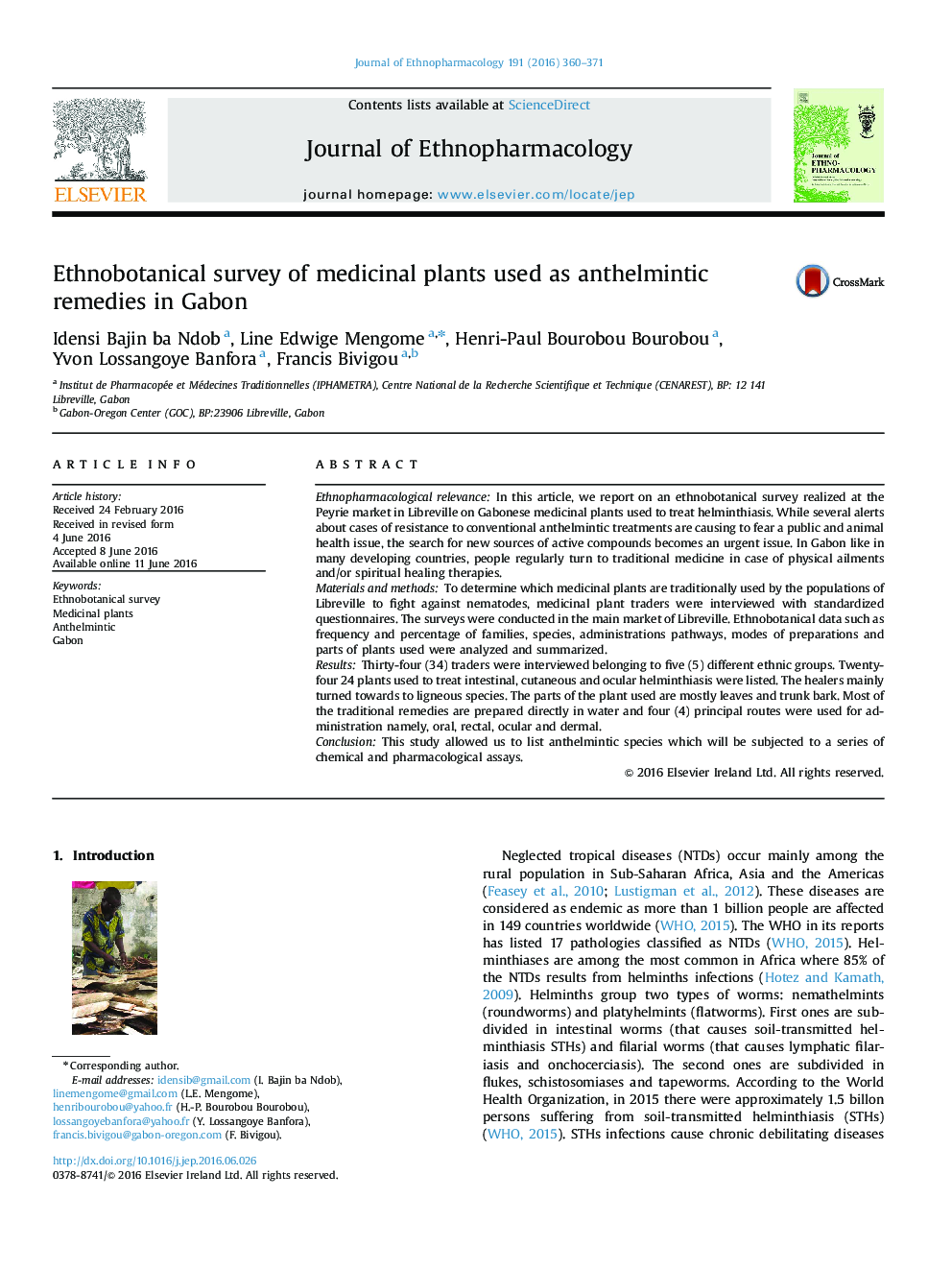| Article ID | Journal | Published Year | Pages | File Type |
|---|---|---|---|---|
| 2544598 | Journal of Ethnopharmacology | 2016 | 12 Pages |
Ethnopharmacological relevanceIn this article, we report on an ethnobotanical survey realized at the Peyrie market in Libreville on Gabonese medicinal plants used to treat helminthiasis. While several alerts about cases of resistance to conventional anthelmintic treatments are causing to fear a public and animal health issue, the search for new sources of active compounds becomes an urgent issue. In Gabon like in many developing countries, people regularly turn to traditional medicine in case of physical ailments and/or spiritual healing therapies.Materials and methodsTo determine which medicinal plants are traditionally used by the populations of Libreville to fight against nematodes, medicinal plant traders were interviewed with standardized questionnaires. The surveys were conducted in the main market of Libreville. Ethnobotanical data such as frequency and percentage of families, species, administrations pathways, modes of preparations and parts of plants used were analyzed and summarized.ResultsThirty-four (34) traders were interviewed belonging to five (5) different ethnic groups. Twenty-four 24 plants used to treat intestinal, cutaneous and ocular helminthiasis were listed. The healers mainly turned towards to ligneous species. The parts of the plant used are mostly leaves and trunk bark. Most of the traditional remedies are prepared directly in water and four (4) principal routes were used for administration namely, oral, rectal, ocular and dermal.ConclusionThis study allowed us to list anthelmintic species which will be subjected to a series of chemical and pharmacological assays.
Graphical abstractMap and localization of the study area.Figure optionsDownload full-size imageDownload high-quality image (172 K)Download as PowerPoint slide
